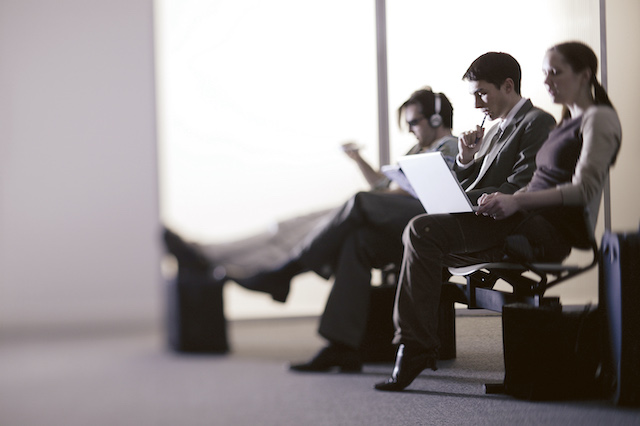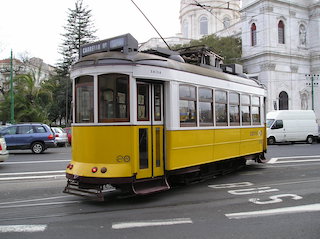Privileged Access Management Of Airport Lounges For Travellers
Airport lounges offer privacy, comfort, and services for executives in transit. These areas require high levels of digital and physical security. Privileged access management plays a direct role in who gains access to systems and services. Traveling executives rely on connected services for productivity. These services include Wi-Fi, corporate VPNs, and secure communication channels. Lounge access often blends physical entry with digital network permissions. Both layers require access control to prevent illegal use.
Privileged access management
Each executive device connects to private networks within airport lounges. Privileged access management controls how and when these connections occur. Lounge systems may link with secure systems, or internal IT resources. Without strict access controls, sensitive data could be exposed. Executives handle communications while waiting for flights. These digital path ways must remain at all times. Privileged access tools ensure only users connect.
Identity
Identity ensures only individuals access protected networks and systems. Lounges use digital tokens to secure access. Executives log into lounge portals. Access permissions are based on verified identity profiles. These controls reduce attempts and flag errors. Devices must also match registered logins. Combining user and device identity ensures entry.
Securing executive devices with control
Each connected device inside a lounge adds risk. Privileged access management checks devices before access. Executives using personal laptops or phones must pass device security checks. Endpoint control tools scan for compliance with security policies. Systems block out dated soft ware or missing anti virus protection. Only trusted, clean devices are granted access to internal lounge systems. These steps reduce the spread of threats across networks.
Limiting lateral movement within lounge networks
Lounge networks often support multiple layers of access. Privileged access management prevents users from moving between systems that are not related. Each executive only uses services linked to their degrees. This method reduces exposure to systems outside the intended scope. It also ensures internal divide between customer facing and admin services. Access borders are through identity, location, and session type.
Monitoring session activity in real time
Continuous monitoring helps track how executives use with lounge systems. Privileged access management tools log session activity for later review. Each action is recorded and stored. Security teams detect suspicious behavior based on real-time alerts. Access logs also help in case of audits or incidents. Executives benefit from better system. Monitoring builds trust without ceding lounge experiences.
Restricting access or time
Executives travel across different airports and time zones. Lounge systems often apply access limits based on location or time. Privileged access management controls them. Access permissions activate only during specific time windows. Geofencing limits connections to approved lounge locations. These rules reduce the risk of unauthorized remote access. Traveling executives receive access only where and when needed.
Supporting temporary access for guest executives
Airport lounges sometimes support guest executives with limited credentials. Privileged access systems generate temporary access for such users. These credentials include expiration times and restricted privileges. Guests cannot access full lounge networks or confidential resources. Temporary permissions expire automatically after departure. Lounge administrators monitor and revoke access if risks emerge. This protects resident executive users from unnecessary exposure.
Integrating access with lounge systems
Digital memberships often grant entry into premium lounge areas. Privileged access management integrates with these systems to streamline identity verification. Executives present a digital ID linked to their access permissions. The integration allows seamless verification at physical entry points and digital checkpoints. Membership data connects with access management databases. This approach reduces manual intervention while improving security. Automation enhances the travel experience for busy executives.
Preventing insider threats from lounge personnel
Lounge staff may handle user data or access administrative tools. Privileged access management defines what internal personnel can see or control. Access is segmented based on task relevance. Employees use role-based accounts with strict monitoring. Staff cannot escalate privileges without supervisor approval. Executives benefit from tighter boundaries and fewer points of internal risk. Monitoring ensures all actions are traceable to an account.
Aligning lounge systems with corporate VPNs
Executives often rely on company VPNs while traveling. Lounge systems must allow secure passthrough for encrypted traffic. Privileged access tools manage these interactions efficiently. VPN compatibility is reviewed during network setup. Only recognized VPN endpoints receive access to higher-level network services. This prevents conflicts between corporate policies and lounge configurations. Executives stay secure without sacrificing speed or usability.
Leveraging zero trust in lounge security
Airport lounges can apply zero trust models using privileged access management. Every access request undergoes validation regardless of origin. Trust is never granted automatically, even from known users. Executives must verify their identity at every checkpoint. Lounge systems confirm device health, location, and session status. Zero trust practices strengthen the digital perimeter of exclusive environments. They adapt well to transient, high-value users like traveling executives.
Auditing lounge system
Periodic audits maintain access security across lounge systems. Privileged access management supports these audits with detailed reporting tools. Logs include timestamps, actions, and user identities. Executives gain confidence in their privacy through transparent reporting. Security teams analyze usage patterns to improve controls. Audit findings help in tightening permissions and removing unused accounts. Reports are often required for regulatory compliance.
Automating expiry for executives in transit
Access credentials tied to lounge services must expire automatically. Executives often remain connected for limited time periods. Privileged access systems apply automation rules to manage expiry timelines. Once credentials expire, users must re-authenticate. This step prevents stale accounts from becoming entry points. Lounge access remains safe even after users disconnect. Automation reduces the burden on staff while keeping systems secure.
Enhancing cloud across lounge
Modern lounges depend on cloud platforms for digital services. Privileged access management integrates seamlessly with these environments. Cloud-native tools align with secure access frameworks. Executives connect through single sign-on and identity federation. Their cloud access mirrors permissions granted inside the lounge. Cloud integration keeps services scalable and responsive. Lounge systems grow in step with security policies.
Enabling device for access
Device fingerprinting adds an extra verification layer for access decisions. Each device carries unique characteristics used to identify it. Privileged access tools store these fingerprints for fast comparisons. Executives using new or unregistered devices must complete identity steps again. This reduces impersonation risks and improves control. Lounge systems can block unknown fingerprints automatically. This adds depth to access layers without user frustration.
Applying
Executives face fewer access risks when lounges enforce multi-factor authentication. Privileged access platforms support text, email, app, or biometric verification. Two or more methods ensure stronger identity proofing. These steps prevent account compromise through leaked passwords. Lounge users must verify identity even when sessions resume. This consistent requirement keeps access strong across different locations. Authentication adapts to user preferences and compliance needs.
Reducing risk through least access
Every lounge system applies the principle of least privilege. Executives receive minimum access required for their services. Privileged access management supports granular control down to individual apps or devices. Reducing access limits damage from attacks or internal misuse. Systems grant access only after users meet conditions. Least privilege frameworks promote safety while maintaining user experience. Executives experience speed without exposing full infrastructure.
Improving emergency response
When security incidents occur, speed matters. Privileged access systems enable fast revocation of compromised accounts. Lounge administrators can freeze or delete access remotely. Executives under threat lose access instantly, reducing risk. Incident response becomes coordinated and targeted. Logs and alerts support investigation and remediation. Lounge systems recover faster with automated tools in place.
Supporting scalability across lounge locations
Major airlines operate multiple lounge locations. Privileged access management scales across this network easily. Centralized dashboards control access for each site and user. Executives traveling through multiple airports enjoy consistent access settings. Lounge administrators manage permissions from one secure interface. Updates apply in real time without manual syncing. Scalability improves coordination and reduces administrative strain.
Elevated travel experiences through secure access
Privileged access management enhances the lounge experience for executives. It creates a secure digital perimeter in high-traffic environments. From secure Wi-Fi to managed access, every feature supports safety without slowing anything. Executives depend on uninterrupted, protected services while in transit. Privileged access tools ensure that lounge technology meets these. Traveling becomes seam less when security works quietly in the background.





